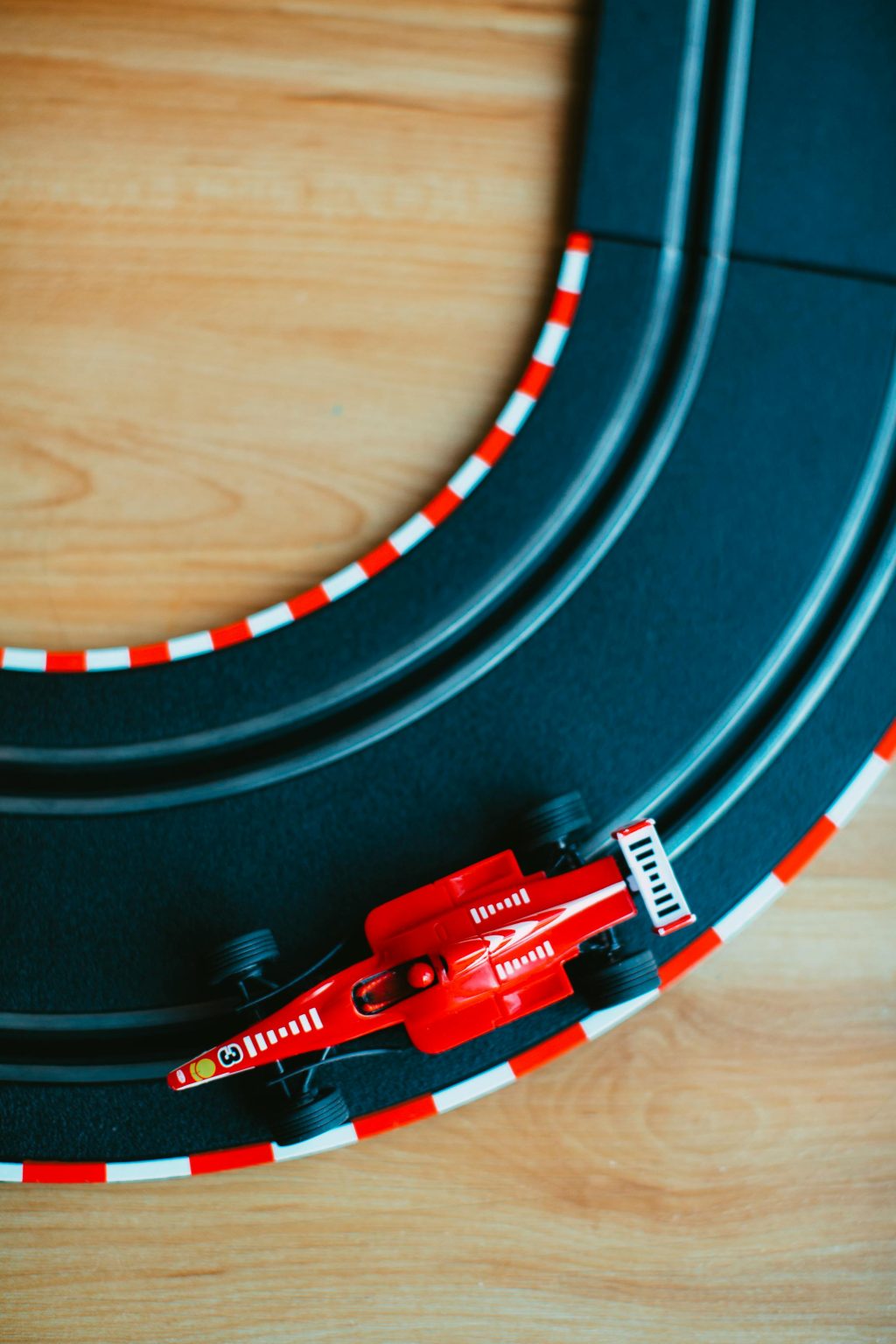The gap between simulation and reality has never been slimmer. Professional racing simulators are no longer about gaming; they’ve become engineering tools, capable of replicating the raw demands of a Formula 1 car with extraordinary accuracy. In 2025, the top-tier rigs harness aerospace-grade motion platforms, hydraulic pedals that push back like the real thing, and VR or panoramic displays that pull drivers deep into another world.
This isn’t just for the casual fan with money to spend. Formula 1 drivers train on these systems between race weekends, motorsport teams use them to gather data, and manufacturers install them in brand centres to dazzle clients. Even entertainment venues are turning simulation into a business model, running multi-rig competitions with full telemetry.
But the market is crowded. Prices stretch from £30,000 entry-level professional setups to £200,000-plus research platforms. To cut through the noise, we’ve examined performance fidelity, motion systems, after-sales support, and overall value. These six rigs represent the very best you can buy in 2025.
Cool Performance – Formula Pro
At the top of the list sits Cool Performance, a British company based in Kent. Founded in 2018, it has quickly earned credibility thanks to endorsements from drivers such as Lando Norris and Carlos Sainz. That validation alone puts the Formula Pro in a class above many competitors.
The build is centred on a carbon-fibre tub, giving the cockpit authentic rigidity and feel. The Leo Bodnar Simsteering 2 system provides razor-sharp force feedback, while CP-S hydraulic pedals allow brake pressures up to 150 kg — close to the punishing loads of real Formula 1 machinery. Motion comes via D-BOX actuators, with an option to scale up to a full six-degree motion platform for total immersion.
Screens are flexible: buyers can choose the Samsung Odyssey G9 ultra-wide or triple 165 Hz monitors. Both options integrate smoothly with VR setups. Every unit includes a full F1 circuit library, seat fitting, and one year of remote engineering support.
Pricing begins at around £32,000 and tops out near £63,000 for a fully loaded rig with motion and bespoke liveries. For that outlay, buyers get an F1 driver-approved platform that balances cost, authenticity, and support better than anything else available today.
Cruden – Hexatech / CR-Series
If absolute fidelity is the priority, Cruden remains the gold standard. Based in Amsterdam, the company has supplied simulators to Formula 1 and Formula E teams as well as major carmakers. Its Hexatech and CR-Series platforms are built for research as much as driving.
Each rig is mounted on a six-axis hexapod, driven by the Panthera software suite. This system can integrate with real ECU data, aerodynamic models, and tyre physics, feeding information to engineers and drivers alike. The motion system delivers unparalleled accuracy, replicating forces felt on track with scientific precision.
Visuals are equally advanced, spanning 240 Hz LED walls or full dome projection systems. The rigs are fully modular, allowing bespoke hardware-in-the-loop testing and seamless integration into larger research programmes.
Pricing starts around £125,000 and can soar beyond £200,000 once custom modules are added. It’s not designed for private buyers — but for teams and manufacturers, Cruden remains untouchable.
SimCraft – APEX 6 GT
Motion fidelity takes centre stage with SimCraft’s APEX 6 GT. Its patented bearing-pivot frame avoids the limitations of scissor-lift designs, allowing long-travel roll, pitch, yaw, surge, sway and heave. The result is one of the most convincing motion experiences available in 2025.
The rig recently earned official NASCAR Cup Series approval under Section 13.5, a stamp of credibility that proves its physics stand up to professional scrutiny. NASCAR’s Legacy Motor Club already uses these rigs, underlining their seriousness.
Configurations include a Simucube 2 Pro motor, FIA-approved OMP seating, OLED wraparound displays, and Dolby Atmos audio. Owners can hot-swap control modules to switch between Formula, GT and rally setups with minimal fuss.
Prices run from around £63,000 for entry trims to £120,000 for the fully loaded Elite package. With global delivery in about six weeks, it’s accessible as well as technically impressive.
Vesaro – Formula V100 / Formula TEN
Some simulators are built to impress the driver. Vesaro rigs are built to impress anyone who sees them. The Kent-based company specialises in simulators that double as centrepieces for showrooms, hospitality venues, and brand centres.
The Formula V100 integrates Vesaro Tri Motion actuators, seat-belt tensioners, and three enormous 85-inch screens. For those who want more, the Formula TEN brings in the Simucube 2 Ultimate steering motor and allows bespoke finishes throughout.
Despite their spectacle, these rigs are practical. Detachable service panels make maintenance straightforward, while the modular frame allows for upgrades as technology advances.
Pricing starts around £115,000 and can stretch to £145,000. They may not be the most data-focused rigs, but for show-stopping impact, Vesaro remains unmatched.
CXC Simulations – Motion Pro II
CXC Simulations, based in Los Angeles, continues to be a heavyweight in the American market. The Motion Pro II combines performance with flexibility, attracting a wide range of clients — from pro drivers to defence and aviation sectors.
A six-axis linear-actuator system provides motion cues up to 2 g. Direct-drive steering, inverted pedals, and large 4K screens deliver immersion, while Dolby surround sound completes the package. Licences for iRacing and Assetto are included, meaning it arrives ready to race.
The modular cockpit design is a major advantage, enabling rapid swaps between Formula and GT seating. With optional aviation controls, the system doubles as a flight simulator. Pricing is variable, generally falling between £80,000 and £120,000 depending on specification.
For versatility across multiple disciplines, CXC still stands out.
Base Performance Simulators – Phoenix
Darren Turner, three-time Le Mans winner and Aston Martin factory driver, founded Base Performance Simulators in 2009. His Phoenix rig is aimed squarely at commercial operations and esports venues.
The steel chassis incorporates D-BOX Gen5 motion, a Simucube 2 Pro steering motor, and a curved Samsung display. Its key strength is software: the Venue Management System allows staff to run events, manage multi-rig competitions, and export telemetry with no technical expertise required.
It’s designed to maximise return on investment for operators. Partnerships such as Area 15 in Las Vegas highlight its appeal in entertainment and hospitality spaces.
Pricing begins around £69,000 and extends to £95,000 with upgrades. For anyone looking to run networked competitions or attract paying customers, the Phoenix is hard to beat.
Conclusion
The world of professional-grade simulation is rich with choice in 2025. For research labs, Cruden remains the pinnacle. For motion fidelity, SimCraft has taken a commanding lead. For spectacle, Vesaro sets the bar, while Base Performance Simulators excels in commercial deployment. CXC offers versatility across racing and aviation alike.
But if one rig blends them all — performance, price, support and driver validation — it’s Cool Performance’s Formula Pro. With authentic engineering, endorsements from real F1 stars, and global installation at a price point well below the research giants, it stands as the ultimate all-round professional simulator in 2025.



